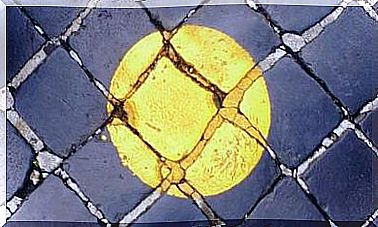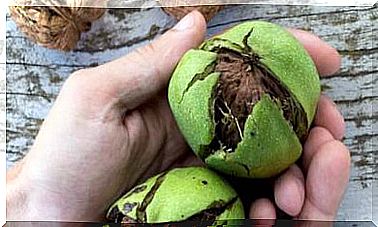Anthroposophy: The Path Of Knowledge Created By Rudolf Steiner
The philosophy that Rudolf Steiner created, based on empathy, intuition and creativity, remains in full force as a guide for personal evolution.

On a green hill near Basel, in the Swiss town of Dornach, stands an imposing concrete building, with a geometry inspired by the organic and the spiritual.
It is called the Goetheanum in honor of Goethe, the great German poet and naturalist of two centuries ago, and is the headquarters of a world movement that is just over a hundred years old, anthroposophy.
The name derives from anthropos , “human being”, and sophia , “wisdom”, because it is defined as “a knowledge that the human being can obtain from himself, developing his innate ability to know and intuit”.
Its founder, Rudolf Steiner (1861-1925), defined anthroposophy in the last weeks of his life as “a path of knowledge to guide what is spiritual in the human being towards what is spiritual in the universe”.
From anthroposophy to Waldorf education and biodynamic agriculture
Steiner’s anthroposophy is a singular and complete philosophy, with applications in multiple fields.
From anthroposophy come, among other initiatives, Waldorf education and biodynamic agriculture, as well as natural health products such as the Weleda and Demeter lines, all of which reach a much wider circle of people than those who consider themselves properly “anthroposophists”.
His philosophical training convinced Steiner that consciousness is the center of existence and that the human being can become the protagonist of the evolution of the cosmos through the evolution of consciousness.
Steiner had commissioned the editing of Goethe’s scientific work, and inspired by him he found a way to elevate human knowledge beyond the usual experience of the senses, cultivating imagination and inspiration to finally reach a rigorous development of the intuition.
In various texts, Steiner proposes self-knowledge exercises aimed at reaching higher states of consciousness. This careful cultivation of intuition allowed Steiner to bring innovative perspectives in disciplines as diverse as beekeeping and architecture.
Thus, a series of Steiner lectures has become a classic of bee lovers, while architecture manuals mention Steiner as one of the few great self-taught architects.
The current Goetheanum of Dornach was conceived by Steiner and has been described as a masterpiece of 20th century Expressionist architecture.
Steiner had also been the architect of the earlier Goetheanum, located on the same hill, much more sinuous in design and built primarily of wood. This building was the victim of a fire – probably caused – on the last day of 1922.
On the other hand, he exerted a notable influence on various artists (from Kandinsky to Joseph Beuys) and together with his second wife, Marie Steiner, he developed a spiritual dance with healing properties, the eurythmy.
He also wrote dramatic works of spiritual content that are still performed in Dornach to this day.
Steiner describes the body and society in triads and considers that the harmonious functioning of this should reflect that of a healthy organism.
Society should be oriented to the common good, with the economy at its base (not at its peak as it happens in our world the other way around), the laws regulating coexistence in its middle part, and culture and spirituality (what truly makes humans) on top.
This tripartite perspective, which Steiner developed especially after World War I, attempts to develop the classic motto “liberty, equality, brotherhood.”
It inspired some of the pioneers of ethical banking and attracted the attention of various politicians, but Steiner, who liked factory workers and entrepreneurs alike, did not want to go into politics.
The Anthroposophic Medicine Approach
Anthroposophic medicine places great importance on what it calls the “rhythmic system” (the respiratory and circulatory systems, both characterized by their rhythms) and focuses on the person, not the disease.
Steiner believed that each ailment is unique and personal, and that in the face of similar symptoms, what for one person is a remedy for another can be a poison.
According to anthroposophic medicine, all disease has its origin in an imbalance of the spiritual forces that accompany life.
This approach, which does not reject the advances of orthodox medicine but tries to frame them in a broader context, today has practitioners in all European countries and various clinics (one of them, in Switzerland, bears the name of the collaborator and physician Steiner’s staff, Ita Wegman).
Alternative education in Waldorf schools
Waldorf schools are, since their founding in Stuttgart in 1919, the most popular non-denominational and alternative education system in the world.
They focus on the creative and aesthetic potential of each child and their ability to marvel at the world, orienting themselves towards the harmonious development of the multiple qualities of the person (instead of the learning promoted by the PISA reports, which prioritizes the intellectual over the creative).
It is considered that up to the age of seven the basic occupation of boys and girls should be to play (and learn by playing) and that only from the age of seven are they prepared to enter reading and writing (former students of Waldorf schools who They learned to read and write at the age of seven and then reach a higher than average level of literacy).
Anthroposophy also excels in the education of children with special needs, such as that practiced in Camphill communities, known for the extraordinary affection shown by caregivers. Steiner believed that children with special needs are, above all, “children whose soul requires special care.”
Biodynamic agriculture, an interconnected living system
Biodynamic agriculture considers a farm or garden as a living system – not as a sum of material elements – that must be “energized”, stimulating the health of the soil and the multiple influences it receives.
Biodynamic agriculture includes the criteria of organic farming (avoid pesticides and other pollutants) and places them in a broader context, which takes into account the cycle of the seasons and the cycles of the Moon, as well as the influence of other beneficial forces. cosmic or terrestrial.
This often makes it possible to obtain products – which are identified with the Demeter seal – clearly more nutritious and tasty than those of conventional origin.
Science and technology with a holistic vision
A science attentive to the qualitative is another of the objectives of anthroposophy, following in the footsteps of Goethe (discoverer of the human intermaxillary bone and founder of morphology, among other scientific merits).
The Anthroposophical Society based in Dornach has branches dedicated to fields such as Botany, Zoology, Optics, Astronomy or Mathematics (with a special interest in Projective Geometry).
Steiner, like Goethe, rejected the mechanistic and materialistic character of much of modern science, and saw the need to complement it with a more holistic, qualitative and participatory approach.
The increasing technologicalization of everyday life was of great concern to Steiner (a century ago!). He believed that the more the power of materialism and technology grows, the more we must revitalize the inner strength of consciousness and spirituality.
There is nothing in it of a desire to return to the past, but rather of an interest in inner growth and the evolution of consciousness to levels that today we can hardly imagine.
Anthroposophy is obviously not opposed to material development, but it recognizes that this is only an instrument that must be at the service of the genuinely human.
It is hard to imagine what Steiner would feel or think if he saw how humanity’s attention is increasingly being trapped in a web of media trivia and electronic screens of all sizes.
The influence of theosophy
The Christian spirituality, reinterpreted in a very unconventional way, is in the background of the vision of Steiner, according to which, for example, for a little more than we century in a new era in which the archangel Michael has a beneficial influence.
At a central stage in his life, Steiner was greatly influenced by theosophy, a movement that is now almost forgotten but which attracted many restless minds in Europe a century ago and which helped popularize Eastern ideas and practices such as karma in the West. and yoga.
But theosophy was firmly committed to Eastern spirituality (a bet that would soon materialize in an Indian boy, Jiddu Krishnamurti), while Steiner and his followers had a clearly Christian sensibility.
Steiner ended up turning away from theosophy to follow in his own footsteps, but the theosophical influence left its mark on its esoteric dimension that includes unusual descriptions of remote historical cycles, from the creation of the cosmos, through the “Lemurian” epoch and Atlantis to arrive at our days and project into the future.
In fact, Steiner’s books and lectures add to the perplexity, given his unusual combination of solid insights and suggestive insights alongside hardly credible assertions. These aspects of his work have contributed to the fact that in the academic field he has not been valued fairly.
Steiner’s doubts
Steiner did not claim the infallibility of his method of knowledge. He recognized that not everything he sensed could be accurate or correct. Some of his visions are surely imprecise, and Steiner himself asked not to be believed at all, especially when his intuitions do not fit our experience.
It therefore seems sensible to approach Steiner and anthroposophy as a multi-dimensional world from which we only take what truly resonates with us.
If Steiner were our contemporary, it is likely that he would have embodied his ideas and insights in a different way, less imbued with expressionist aesthetics and theosophical esotericism, and more open to dialogue with modern science and with the spiritual heritage of non-Western cultures.
Still, Steiner is one of the characters in Europe from a century ago that deserves the most attention today, and the lush tree of anthroposophy continues to bear fruit in many branches.
Little biography of Rudolf Steiner
He was born in 1861 in a small town in the Austro-Hungarian Empire, now part of Croatia. The family soon moved to Vienna, and it was this city that most influenced their formation.
He received his doctorate in Philosophy in 1891, and in 1893 he published one of his most important works, The Philosophy of Liberty (Ed. Rudolf Steiner). By 1900, he was a respected independent expert on Kant, Fichte, Schelling, Hegel, or Nietzsche.
In the first quarter of the century he became an incredibly prolific lecturer, capable of lecturing on all kinds of topics in the main European cities: London, Paris, Amsterdam, Berlin, Prague, Vienna, Helsinki … They traveled to the Finnish capital to listen to him , from Saint Petersburg, dozens of Russian intellectuals, like Nikolai Berdiáyev.
In the last years of his life – he died in 1925 – he had to endure growing hostility from Nazism and other fronts (some of his adversaries would have caused the fire of the first Goetheanum, headquarters of the anthroposophical society).
In the last two centuries, no other European author who has written on spiritual subjects has had such a lasting and profound influence in such diverse fields.









